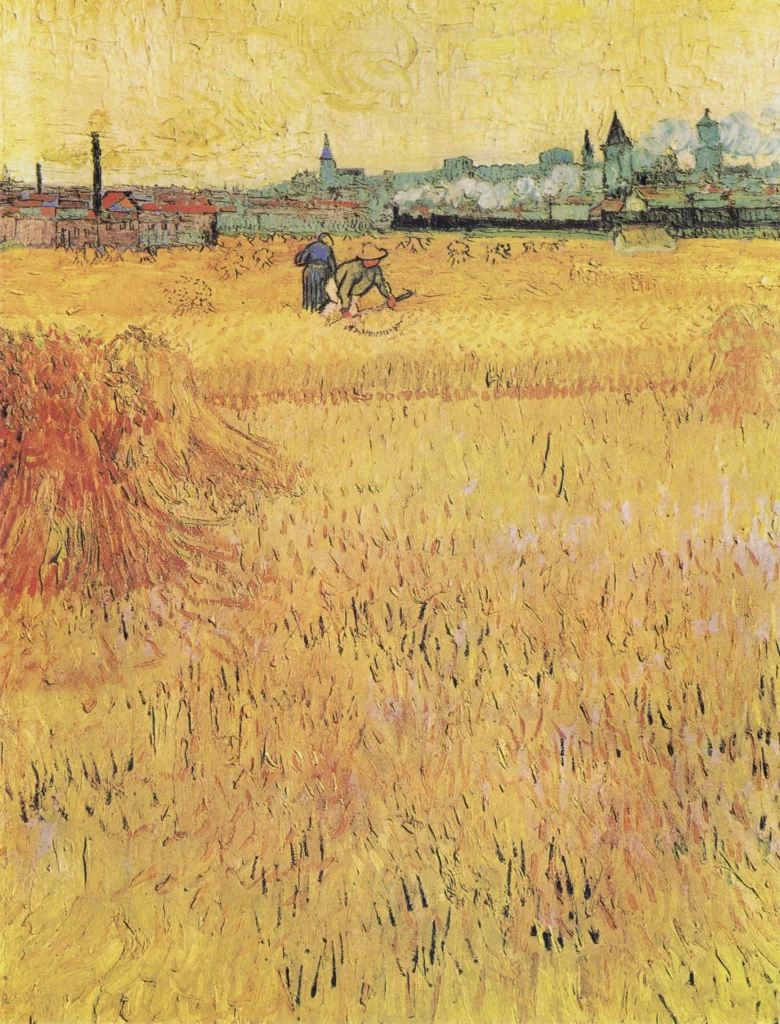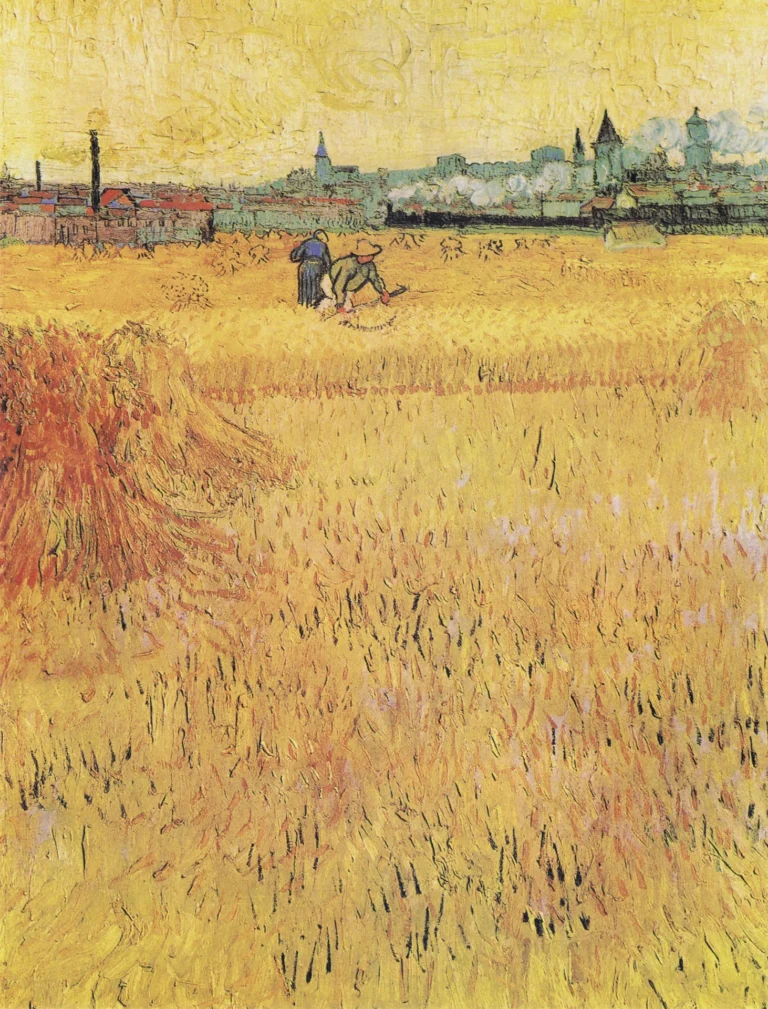Wheat Field With View Of Arles (1888)
Created during Vincent van Gogh's prolific period in Arles, Wheat Field With View Of Arles captures a tranquil scene showcasing harvested wheat fields. Executed in oil on canvas, the painting measures 73 cm × 54 cm and is notable for its portrait format. The foreground includes sheaves of wheat, while a couple works in the field, enveloped by a vibrant spectrum of yellow and ochre. Van Gogh infuses this work with deep symbolism, representing the cyclical nature of life and death.
Created in June 1888
About the Artwork
In June 1888, during his stay in Arles, Vincent van Gogh painted Wheat Field With View Of Arles as part of a series dedicated to the local wheat harvest. This period marked a peak in his artistic expression, as he drew inspiration from the rural landscape and the labor of the local peasants. The urgency of the harvest is reflected through his rapid brush strokes and lively color choices, revealing Van Gogh’s deep admiration for the simplicity and beauty of rural life. The artwork stands as a testament to both his emotional connection to the land and his quest to depict the connection between humanity and nature.
Did You Know
The painting was created during a notably happy and productive time for Van Gogh in Arles, where he experienced a creative burst and developed his distinctive style.
Unlike many of his wheat field paintings which were typically rendered in landscape orientation, Wheat Field With View Of Arles is presented in a portrait format, highlighting Van Gogh’s versatility.
Wheat fields held significant symbolic value for Van Gogh, representing not just agricultural life but also deeper themes of existence, mortality, and the cycles of nature.










